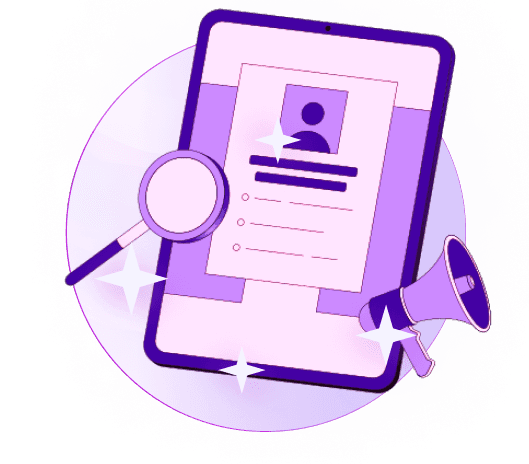Blogs
Articles

What is Cold Email? A Simple Guide That Actually Gets Responses (2025)
Understanding what is cold email might seem straightforward. The reality shows a different picture with average reply rates between 1% and 5%. People are not getting it right.
Cold emailing comes with its own set of challenges. The task becomes tougher than most communication methods for two simple reasons. You start with zero relationship with your recipient. You also miss out on non-verbal feedback that helps adjust your approach as you go.
The method still works effectively if executed properly. A cold email boils down to an individual-specific, one-to-one message that targets a specific person. The most successful ones keep it brief - just 2-5 sentences that add up to less than 200 words.
What is Cold Email?
Cold emails stand out as a unique strategy in business communication. The sort of thing I love about cold emails is how they differ from other outreach methods, though many professionals misunderstand this distinction.
Cold email meaning and definition
A cold email is an unsolicited message you send to someone without any prior relationship or contact. This digital version works just like cold calling. Cold emails shine through their individual-specific experiences aimed at specific people rather than mass audiences. The main goal focuses on starting real business conversations that might create value – whether through sales, partnerships, or meaningful responses.
A cold email that works needs to tell recipients three things: your identity, your value proposition, and the next steps they should take. These emails should make prospects eager to open, read, and respond, which starts a relationship that grows naturally.
Cold email vs cold call email
Cold emailing and cold calling both reach out to potential customers without prior contact, yet they differ by a lot in several ways:
Personalization: Cold calls create direct conversation experiences, while cold emails enable detailed personalization through automation software.
Convenience: Recipients can read and respond to cold emails at their own pace, but cold calls might disrupt someone's schedule.
Efficiency: You can send multiple cold emails in the time it takes to make one sales call, which makes cold emailing more adaptable and affordable.
Information gathering: Cold emails work better when you need to collect valuable lead information.
Cold email vs email marketing
Cold emailing and email marketing differ mainly in how recipients relate to you:
Cold emails go to people who have never interacted with you before and haven't agreed to receive your messages. These personalized, one-time messages aim to start conversations with potential prospects.
Email marketing targets people who already subscribe to your content. These recipients know your brand and have engaged with it before. It also involves sending multiple targeted emails over time to build relationships.
Many people make the mistake of writing cold emails like marketing messages – too long, flashy, and filled with unnecessary information.
Is cold emailing illegal and Safe in 2025?
Cold emailing creates legal concerns for businesses worldwide. Clients frequently ask me whether their outreach strategies might cause legal problems. Here's a clear picture of the legal situation in 2025.
Understanding CAN-SPAM and GDPR
The CAN-SPAM Act controls commercial emails in the United States, while GDPR handles data protection in the European Union. Companies violating CAN-SPAM face penalties up to $53,088 per email. GDPR violations can lead to fines of €20 million or 4% of annual global revenue.
CAN-SPAM requires:
Accurate header information
Subject lines that match email content
Clear commercial nature identification
Valid physical postal address
Simple opt-out mechanism
GDPR sets stricter rules. Companies must either get explicit consent or prove legitimate interest before reaching out to EU residents.
How to avoid being marked as spam
Your cold emails should deliver real value to recipients. The sender information needs to be accurate, and subject lines must stay truthful.
Clean email lists and quick responses to unsubscribe requests help prevent spam flags. Your emails should reach prospects who can benefit from what you offer.
Using unsubscribe links and sender info
Recipients need a clear way to opt out of future messages. The law requires you to honor opt-out requests within 10 business days. Your unsubscribe option should stay active for at least 30 days after sending the email.
Sender information must reflect your business accurately. Your company name, email address, and physical postal address build trust and meet international regulations.
Marketing emails typically use "unsubscribe" links. Cold emails work better with natural phrases like "let me know if you're not interested" to keep things personal.
Why Cold Email Still Works: Benefits and Use Cases
Cold emailing stands as a powerful business tool in 2025, delivering exceptional returns compared to other marketing channels. Businesses can expect an average return of $42 for every $1 spent on cold email campaigns. This makes it one of the most budget-friendly strategies you can use.
Top benefits of cold emailing in 2025
Decision-makers become directly accessible through cold emailing, which helps you bypass gatekeepers and intermediaries. Cold emails can be tailored at scale to create a one-to-one approach that recipients value. Studies show that 8 out of 10 prospects choose email over telephone for prospecting. They find it less intrusive and appreciate responding at their convenience.
Cold email for meeting and networking
Your network expands when you reach out to professionals through cold emails - it shows initiative. Success comes from being selective about your connections, crafting memorable subject lines, and delivering clear value. Personalized messages demonstrate genuine interest, and studies show they can deliver five to eight times the ROI on marketing spend.
Cold email to potential client
Cold emails let you target prospects with real potential. Your message needs to be concise - their attention might drift if you spend more than two sentences explaining yourself. The value proposition should be crystal clear, along with your goals for the interaction.
Cold email for hiring and job search
Cold emailing proves especially effective for job seekers since professionals check their inboxes multiple times daily. Employers appreciate this non-invasive approach that lets them respond when convenient. Results improve when you identify the right contact person, keep messages brief, and time your emails well - mid-morning on weekdays works best.
Cold email for link building and SEO
SEO link building through cold emailing continues to work well in 2025. High-quality backlinks from authoritative websites become accessible this way. The approach yields better results when you provide real value - through guest posts, broken link fixes, or quality content sharing.
How to Send a Cold Email That Gets Replies
Getting responses from cold emails needs a systematic approach. These six steps will improve your reply rates and make your campaigns work better.
Step 1: Build your lead list
A solid lead list forms the foundation of any successful cold email campaign. Don't buy pre-made lists since they often have outdated information and spam traps. Your focus should be on building a targeted list of prospects matching your ideal customer profile. Find where your ideal customers hang out online. Then concentrate on the top 20% most promising ones.
Step 2: Warm up your email account
Email warmup is vital to deliverability. The process needs you to gradually increase your sending volume and build sender reputation with email service providers. You need 3-5 weeks to warm up properly. Start with 1 email per day and slowly increase to about 20 warmup emails daily. Keep warming up even after you start sending actual cold emails. This protects your sender's reputation.
Step 3: Write a personalized cold email
Personalization boosts reply rates by up to 32%. Good personalization does more than just add the recipient's name. You should understand their pain points, mention their recent activities, or bring up mutual connections. Think about what matters to your prospect. Focus on their problems instead of your product features.
Step 4: Add a clear CTA
Your call-to-action makes the difference between getting a response or being ignored. The best CTAs use 4-8 words and spell out the next step clearly. Stick to one CTA per email. Messages with a single CTA perform 371% better than those with multiple ones. Simple and direct requests get more replies.
Step 5: Send follow-ups
The numbers show that 80% of sales need five follow-ups after the first contact. Many salespeople quit after one or two tries. Your best results come from sending 4-9 follow-up emails. Space them right - wait 2 days after your first email, then 4 days, and gradually increase the gap. Each follow-up should add value rather than just "checking in."
Step 6: Track and optimize your campaign
Keep an eye on key metrics like open rate, reply rate, and positive reply rate. Your reply rate should exceed 8.5%, with positive replies above 1%. The adjusted reply rate shows responses from people who opened your email. This metric helps you learn about your message effectiveness.
Persana.ai offers advanced analytics and automated tracking to optimize your campaigns for maximum results.
Conclusion
Cold emailing continues to be a powerful tool in 2025 despite low average response rates. This piece explores what makes cold emails work and how they stand apart from other outreach methods.
Successful cold emails need to be personalized, concise, and focused on providing value to recipients. CAN-SPAM and GDPR regulations demand attention, but compliance becomes simple when you stick to best practices.
Cold emailing brings undeniable advantages. With a potential $42 return for every $1 spent, these emails are a great way to get ROI compared to other marketing channels. This method gives you direct access to decision-makers and lets you personalize at scale.
Cold emailing succeeds because it creates genuine connections. Your focus should be on starting conversations that address specific pain points instead of sending mass promotional messages. Recipients appreciate this approach and respond more positively.

Create Your Free Persana Account Today
Join 5000+ GTM leaders who are using Persana for their outbound needs.
How Persana increases your sales results
One of the most effective ways to ensure sales cycle consistency is by using AI-driven automation. A solution like Persana, and its AI SDR - Nia, helps you streamline significant parts of your sales process, including prospecting, outreach personalization, and follow-up.



